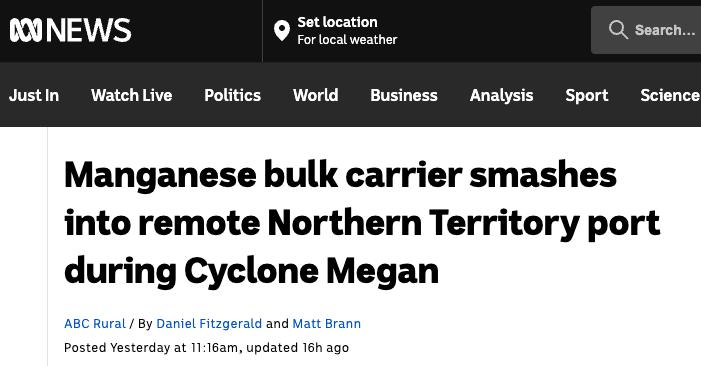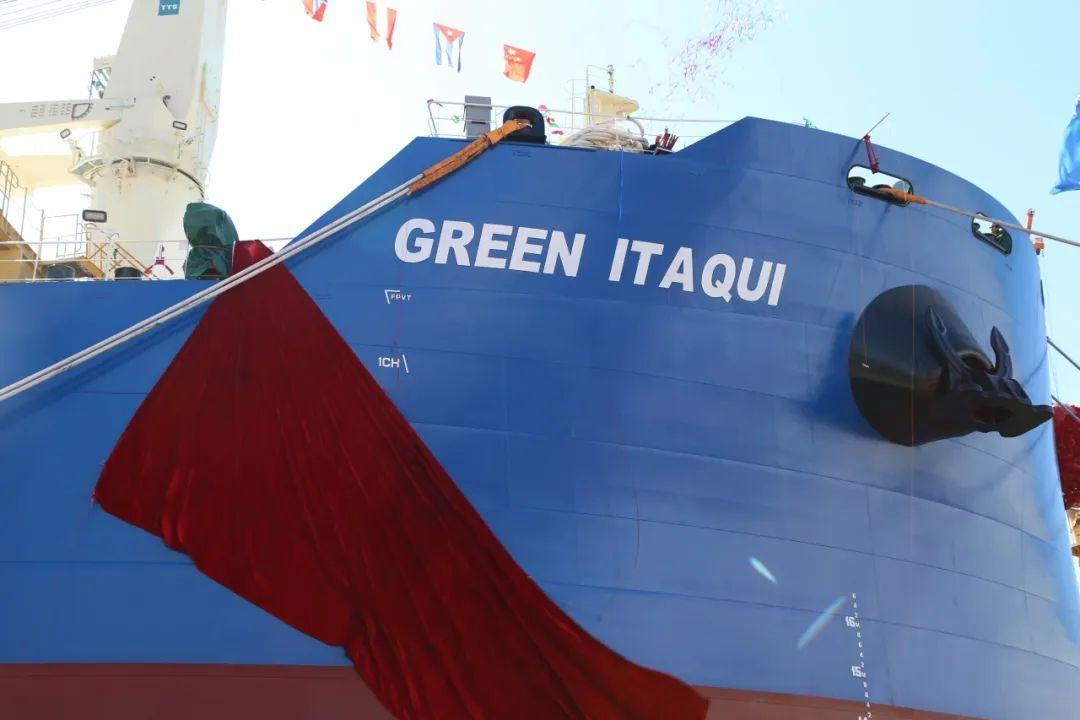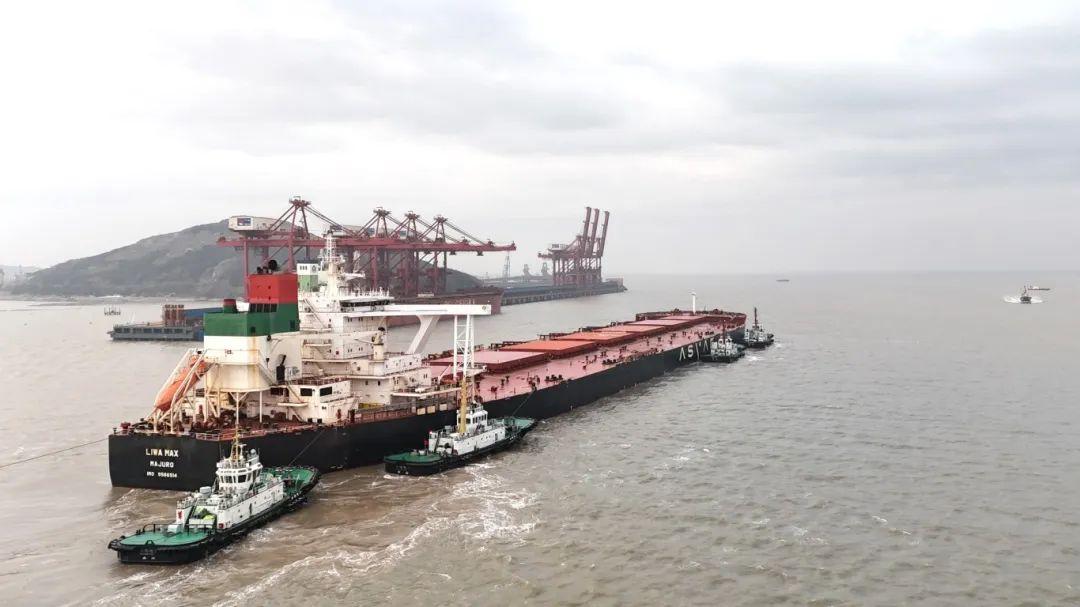《装卸时间与滞期费》第6版
CHAPTER 3 第3章
Commencement of laytime 装卸时间的起算
3.23 Clause 4( c ) of Part II of the Asbatankvoy form provides that “any extraexpense in connection with any change in loading or discharging ports (so named)shall be paid by the charterer and any time thereby lost to the vessel shall countas used laytime”. Based on the load ports originally nominated, the owners of theAntiparos arranged to bunker at the second load port but when this was changedthey had to change their stem to the new nomination. They successfully claimedthis additional expense from the charterers, but the High Court held that they didnot have a further claim for damages because although the change was in breachof charter, clause 4( c ) defined what was recoverable when the owners acceded tothe change of instructions. 2221 ST Shipping & Transport Inc v Kriti Filoxenia Shipping Co SA (The Kriti Filoxenia) , LMLN 928,26 June 2015; [2015] EWHC 957 (Comm).22 Antiparos ENE v SK Shipping Co Ltd and others (The Antiparos) , LMLN 745, 4 June 2008; [2008]2 Lloyd’s Rep 286.COMMENCEMENT OF LAYTIME89
3.24 Under the Worldscale system of freight calculation used in virtually alltanker charters, the freight payable depends on the actual load and discharge portsand, furthermore, clause 9 (b) goes on to provide a formula for compensating theshipowner for any time wasted by the change, so the clause is by no means asone-sided as it might at first appear. It does, however, allow the charterer to totallychange the agreed voyage at any stage en route.
3.25 What happens if the charterer fails to nominate a discharge port timeouslywas the question that arose in The Timna , where the vessel concerned was orderedto the River Weser but the charterers failed to specify which of the Weser portsthey intended to discharge at in sufficient time to avoid delay. In the High Court,Donaldson J held 23 there was no implied term, as had been suggested, that if thecharterers failed to nominate the port of discharge within the time limited by thecharter or within some further period thereafter, the master could himself makethe nomination. As the vessel never became an Arrived ship during the period ofdelay, the shipowner’s claim for demurrage therefore failed, but he was entitled toclaim damages for detention for the delay until the charterers did in fact giveorders as to which port to proceed to. This finding was upheld by the Court ofAppeal, who also held that to constitute a valid order to proceed to a port ofdischarge, the order must be a firm one. 24
3.26 A failure to nominate the discharge port in sufficient time to avoid delaywas one of the many issues that were considered in The Rio Sun , 25 which was adispute not under a charter but under a c.i.f. contract of sale. In that case, BinghamJ held that it was implicit in the sale contract that the buyer should nominatethe discharge port in sufficient time to enable the vessel to sail to that port withoutinterruption or delay, and that failure to do so was a breach of contract. A differentsort of problem arose out of late nomination of discharge ports in LondonArbitration 19/89, 26 where a failure to nominate the second discharge port beforecompletion of loading meant that the master did not have a chance to load thecargo in such a way so as to avoid lightening at the first port after discharge ofthe cargo destined for that port in order to reach the second. The charterers’ failureto give timeous orders had caused the loss they had suffered by having to dischargeadditional cargo at the first port where the price was lower.
3.27 The late nomination of a discharge port may result in the voyage beingextended and/or in a delay on arrival at the discharge port, 27 e.g. because of localrequirements to give notice for tugs, etc. 28 The loss that flows from the former isusually quantified by calculating the time lost and multiplying it by the demurragerate with the addition of the cost of bunkers wasted.23 Zim Israel Navigation Co Ltd v Tradax Export SA (The Timna) [1970] 2 Lloyd’s Rep 409.24 Zim Israel Navigation Co Ltd v Tradax Export SA (The Timna) [1971] 2 Lloyd’s Rep 91 (CA).25 Gatoil International Inc v Tradax Petroleum Ltd ( The Rio Sun) , LMLN 127, 13 September 1984;[1985] 1 Lloyd’s Rep 350.26 London Arbitration 19/89 – LMLN 256, 26 August 1989.27 See also Heinrich Hanno Co BV v Fairlight Shipping Co Ltd; Hanse Schiffahrtskontor GmbH v AndreSA (The Kostas K), LMLN 135, 3 January 1985; [1985] 1 Lloyd’s Rep 231.28 For instance at Milford Haven, 48 hours’ notice is required for the provision of tugs for a VLCC.COMMENCEMENT OF LAYTIME90
3.28 If, on the other hand, there is a delay at the discharge port then the typeof claim will, it is suggested, depend on whether the vessel concerned is an Arrivedship, i.e. it will depend on whether the relevant charter is a berth or port charter.If the vessel is not an Arrived ship, then there will be a claim for detention for theperiod of delay, quantified at the demurrage rate. If the vessel is an Arrived ship,then laytime will run and any remaining laytime may be used to offset the delay.
3.29 It is important to distinguish between the express right of a charterer toselect the loading berth given in the charterparty and his implied right to do so.As already mentioned, the effect of the express right given by such expressions as“one or two safe berths Mississippi River” is to prevent a vessel from becomingan Arrived ship until she gets into the designated berth. However, even if thecharter does not expressly give the charterer this right, he still has the impliedright to select the berth. In that case, however, the vessel becomes an Arrived shipwhen she gets within the larger area named in the charter, i.e. the port or dock. 29
3.30 Difficult questions of construction can sometimes arise as to whether theparties intended the charterer to have an express or an implied right to nominatethe berth. In North River Freighters Ltd v President of India 30 Parker LJ decided thatthe words “one safe berth Dairen” expressly gave the charterer the right to name theloading berth, but went on to suggest that if the charter had said that the vesselwas “to proceed to Dairen and then load at one safe berth”, without adding “asordered by the charterer”, the right would have been implied so that the vesselwould become an Arrived ship when she got within the port.

《装卸时间与滞期费》购买链接(点击可购买)
海运圈聚焦专栏作者 魏长庚船长(微信号CaptWei)

 2018-11-29
2018-11-29 885
885 












